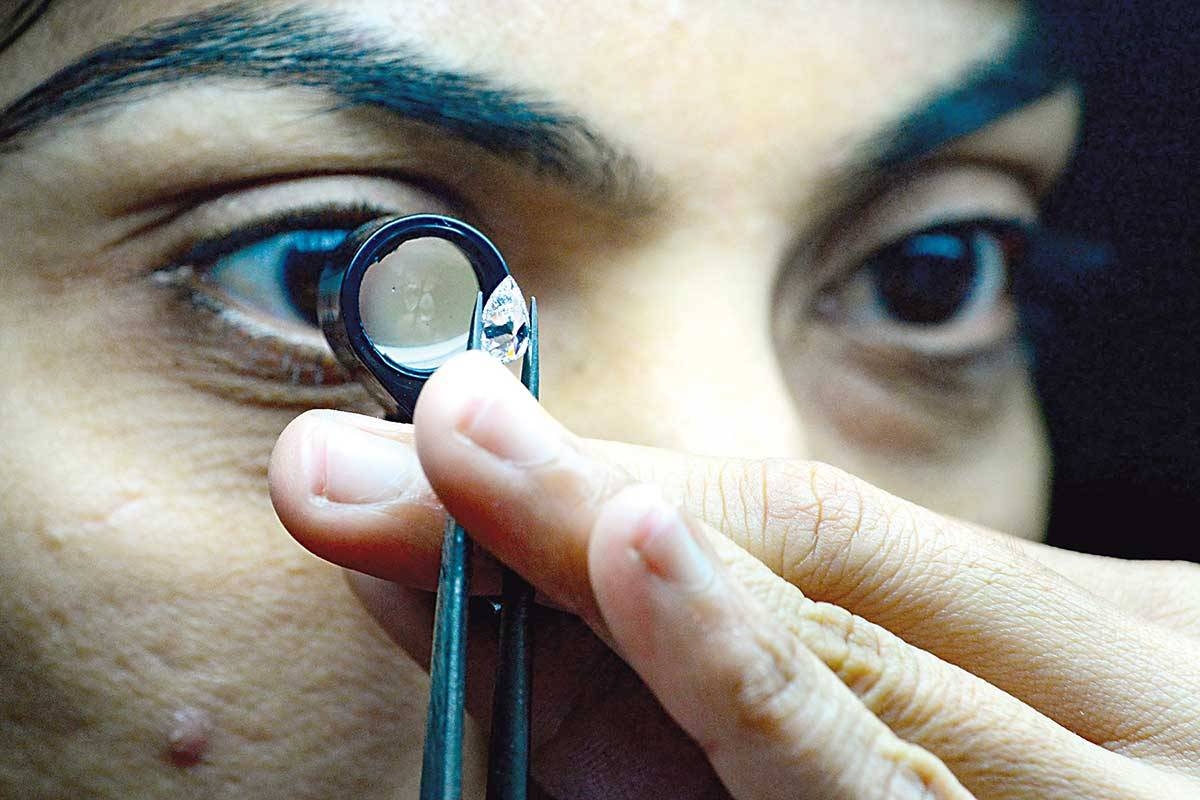In the bustling city of Surat, India, known as the diamond cutting and polishing capital of the world, a revolution is taking place in the diamond industry. Lab-grown diamonds, also known as synthetic or man-made diamonds, are reshaping the $89 billion global diamond jewelry market. While natural diamonds have a long history, with some being over a billion years old, lab-grown diamonds offer a new and more affordable alternative.
At the forefront of this revolution is Smit Patel, the director of Greenlab Diamonds and a third-generation diamond dealer. In his state-of-the-art lab, technicians drop diamond “seed” slices into reactors that simulate the extreme pressure found deep underground where natural diamonds are formed. Within less than eight weeks, Patel’s team can produce a lab-grown diamond that is virtually indistinguishable from a mined gem. “It’s the same product, the same chemical makeup, and the same optical properties,” Patel proudly asserts.
The growth of lab-grown diamonds is evident in the latest industry data. Between 2019 and 2022, the value of lab-grown diamond exports from India tripled, while export volumes rose by 25 percent between April and October 2023. Patel himself claims that his lab has experienced a staggering 400 percent year-on-year growth in volume.
The process of creating lab-grown diamonds involves pumping reactors with carbon-containing gases and subjecting them to heat and pressure. Once the crystals have formed, they are taken to another facility where skilled workers design, cut, and polish the stones to perfection. The end result is a diamond that possesses the same brilliance and beauty as a mined gem.
The rise of lab-grown diamonds has not been without controversy. Proponents argue that these diamonds have a lower carbon footprint compared to their natural counterparts. However, there are concerns about the energy-intensive process involved in creating lab-grown diamonds and whether it truly benefits the environment. While Patel’s lab utilizes solar energy from the local grid, other labs may rely on carbon-heavy sources of electricity.
One significant advantage that lab-grown diamonds hold over natural diamonds is their clean record. Natural diamonds can sometimes be associated with “conflict diamonds” sourced from war zones. In contrast, lab-grown diamonds are produced in controlled facilities, ensuring that they are ethically sourced. This has made lab-grown diamonds a popular choice for engagement rings, with 17 percent of diamond engagement rings sold in the United States in February 2023 being lab-grown. Industry analysts predict that this figure has now risen to 36 percent.
The growth of the lab-grown diamond industry has been driven by companies in China and India, which are among the largest producers of man-made stones. Indian lab diamond makers have experienced a 42 percent year-on-year increase in exports, while natural diamond companies have reported a more than 25 percent drop in sales over the same period. The COVID-19 pandemic further exacerbated this decline, as demand for natural diamonds plummeted when economies reopened, leaving top companies with excess stock.
Lab-grown diamonds are undoubtedly disrupting the global diamond jewelry market. With their affordability, ethical sourcing, and comparable quality to mined diamonds, they are attracting a growing number of consumers. As the industry continues to evolve and innovate, it is clear that lab-grown diamonds are here to stay, offering a modern and sustainable alternative to traditional diamonds.







